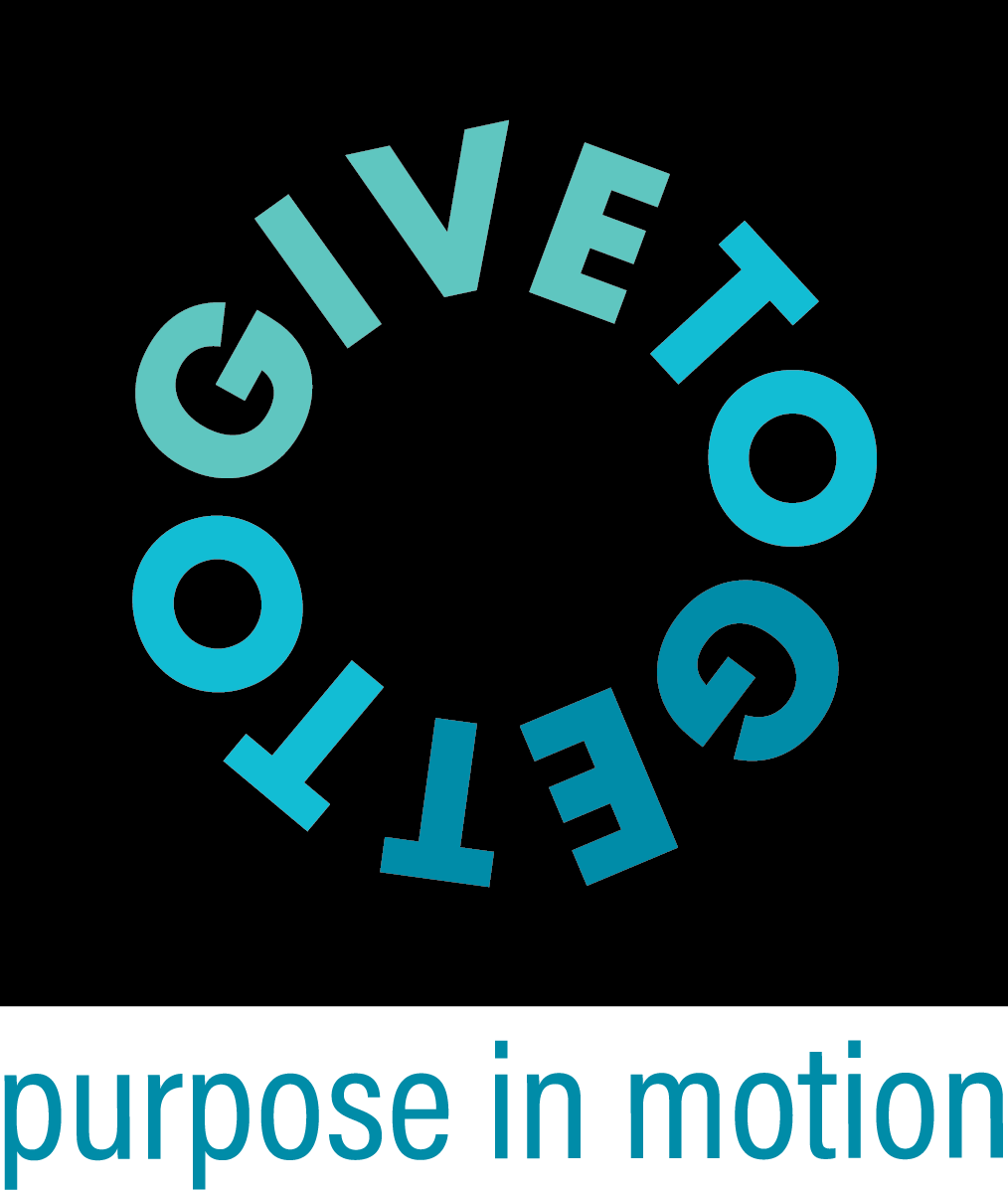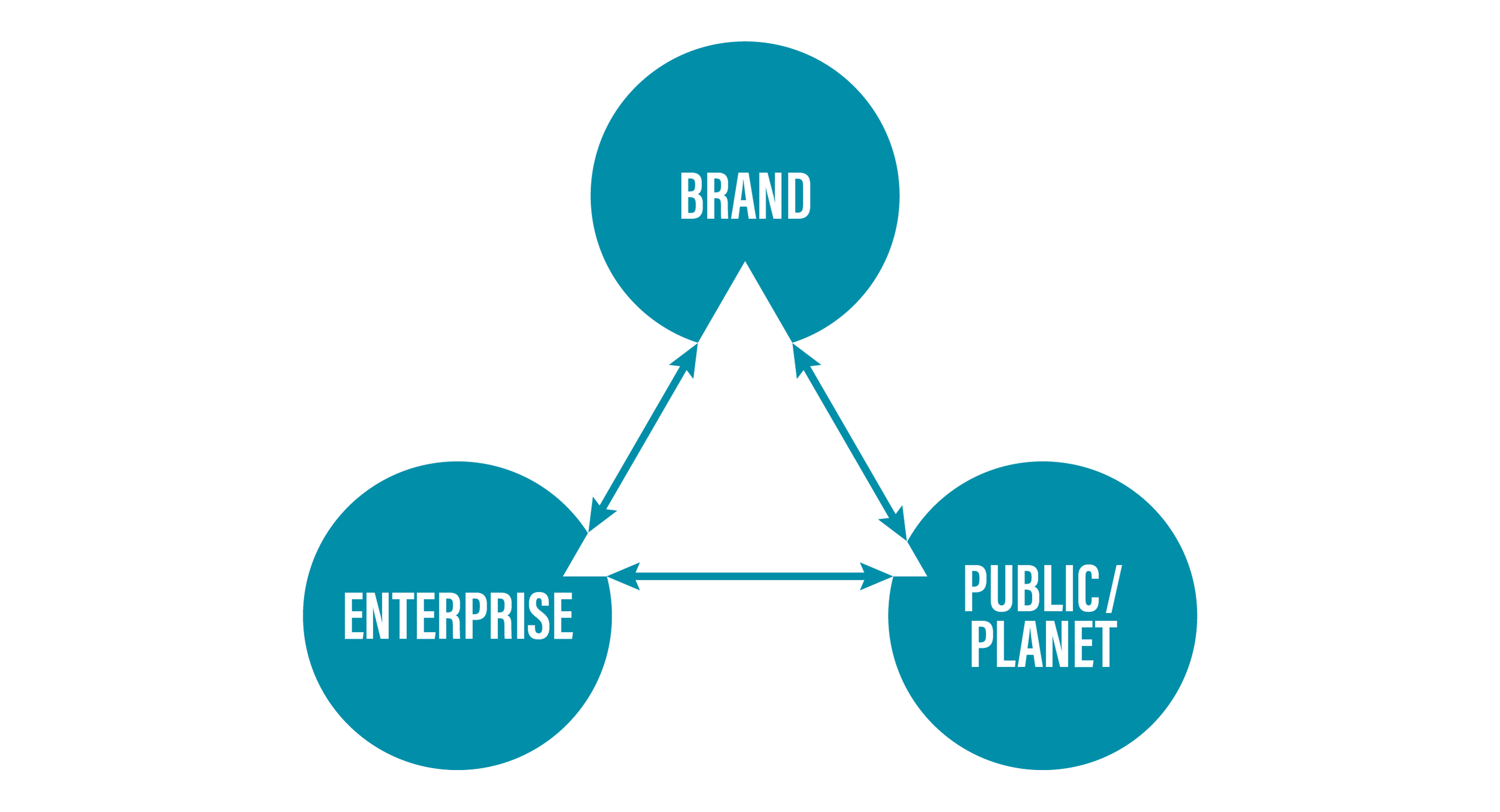Walking the Tightrope: Social Impact Measurement for Business / Part 1 of 4
Not everything that can be counted counts, and not everything that counts can be counted. — William Bruce Cameron
This quote is widely attributed to Albert Einstein in countless memes, but it was Cameron who wrote that sentence about measurement in sociology in the 1960s. However, it could have been written last month in regards to measuring the impact of purpose on business and community.
We have been building our point of view on measurement over the past few years. Our strategic partnership with ProSocial Valuation Service along with our 25 years of putting purpose in motion for business has us thinking about how different constituencies can see the same output differently.
We see measurement and evaluation of social impact on business as a triangle.
It doesn't really matter if you are aiming at one specific objective here with a social impact plan or strategy — you will hit all three for better or worse. Many managers only track the what they are looking for, but in doing so, they are leaving value on the table.
In later posts, we will look more in depth at all three of these areas of impact, but we start with the decision process for making social impact investments and what guidance they need to defend and even grow their budget.
Backwards and In Heels
We have a long of history strategizing and operationalizing purpose for business globally. While purpose is quickly becoming a mandate, business has to walk a tightrope when it comes to measuring the impact of social purpose. The narrative to the public is that they are investing in community to make the world better, but enterprise budgets require enterprise results. And different budgets require different results — they buy different things.
We make social impact a sustainable investment for the company, so it is necessary for that investment to pay off for whatever department has approved it. It is also necessary for that investment to make some tangible impact on the world at large. As a result, social impact investment from business must do double duty — like when Ginger Rogers said that she did everything Fred Astaire did, only backwards and in heels. Social impact can do more than one thing.
Social impact budgets can come from any department. We have seen CSR and social impact sit in marketing, human resources, philanthropy, public affairs, legal, facilities, the c-suite and, recently, newly created DEI departments. This is what makes the work tricky. Budgets get challenged when decision makers forget where the money comes from and what it is supposed to do.
CSR budgets from marketing need to increase consideration among consumers. CSR budgets from HR need to affect talent, culture, and churn. CSR budgets from public affairs and philanthropy need to affect reputation. See what we mean? Any strategic direction of your CSR budget needs to hit that respective bullseye before it hits secondary and tertiary targets.
These first order targets typically fall within two points of our impact triangle above — enterprise and brand. It is critical to take care of that business first, but the mistake is to stop there. These secondary effects can have massive effect on the business. Employees know what kind of brand campaigns their companies run.
Consumers now see how companies treat their employees. And both employees and consumers want to know what kind of effect you are having on their community. They don't want lip service. They want to see clear results and know they are making an impact.
Some get squeamish talking about what their social impact budgets need to do for the company, but they shouldn't. These are resources designated to make the business better. They are investments into assets that have real enterprise value.
As we look into our impact triangle in the next post, we will start with the most important node — impact and value on the enterprise itself.

